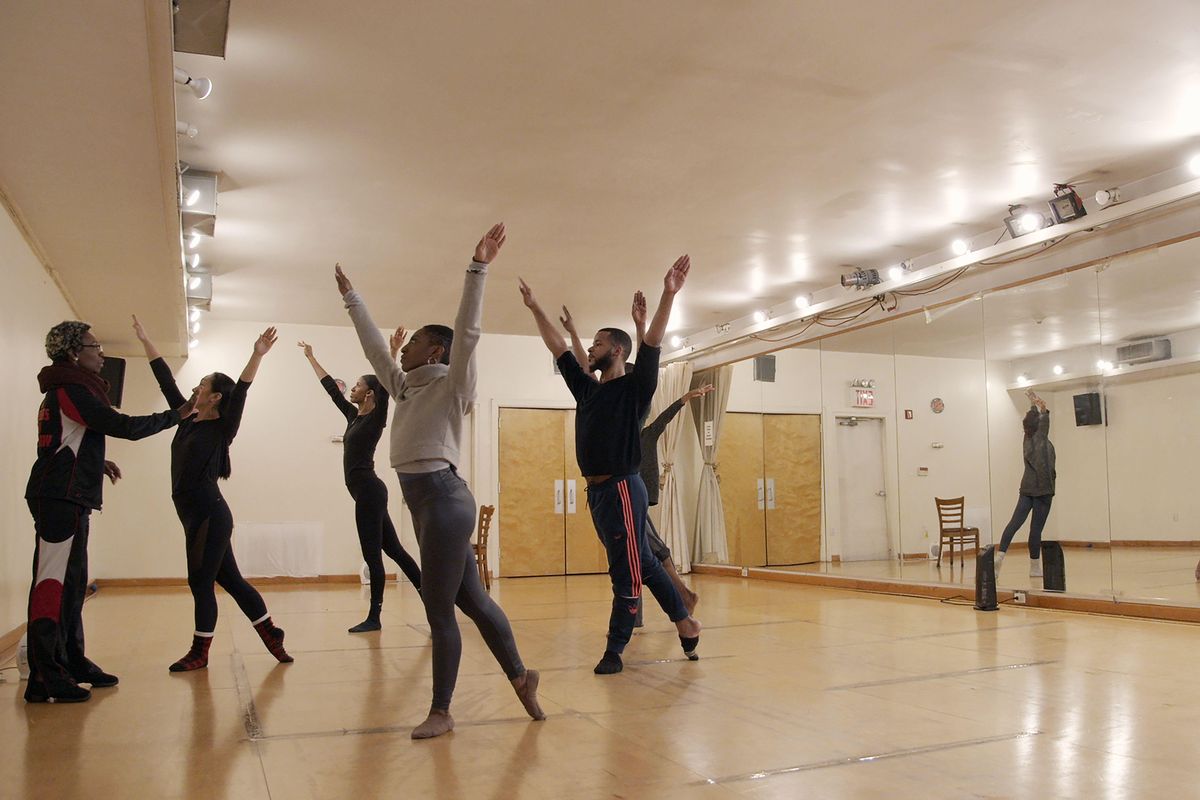
It's hard to overstate the longstanding impact of Black dancers on all genres of movement that we know today — from contemporary and jazz to hip-hop and ballroom styles. Unveiled earlier this month at The Shed in New York City, The Trace of an Implied Presence exhibit by filmmaker and curator Tiona Nekkia McClodden revisits archival footage to showcase the legacy — and living contributions — of contemporary Black dance.
On display now until the end of 2022, the multichannel video installation anchors on McClodden's research into archival footage Dance Black America, a three-day festival celebrating 300 years of African American dance that took place at the Brooklyn Academy of Music (BAM) in April of 1983. Working in collaboration with cultural worker and presenter Mikki Shepard, who produced the festival, McClodden aims to showcase four vital forms of dance that have been shaped by Black dancers.
The exhibit is broken into four "dance floors" constructed via materials typically associated with a certain style of dance. For example, a Marley floor represents the genres of modern and concert dance while a wood floor speaks to the needs of tap dance. Visitors to the exhibit are encouraged to interact with the space, and even use the dance floors. Meanwhile, screens above each floor project images of dancers or groups that McClodden collaborated with, including Shepard, scholar and tap dancer Michael J. Love, and choreographer Leslie Cuyjet.

McClodden also notably worked with Audrey & June Donaldson, experts on Philly Bop, also known as "The Bop" — a social dance genre that originated in Philadelphia during the 1950s in parallel with the rise of Dick Clark's American Bandstand, a popular performance and dance TV program that aired nationally from 1952 to 1989. As Black dancers were typically not selected for live tapings of the show, which was shot in West Philly, local Black communities tweaked the six-count dance to create the Bop as its known today.
Beyond the visual elements, the exhibition is accompanied by a free publication that includes writing from McClodden as essays by writers such as poet and dancer Harmony Holiday and scholars Jasmine E. Johnson and Samantha N. Sheppard. In addition, there is a lineup of on-site performances, readings, and talks that will be held over the months that the show is on display.
Consult the events schedule for dates and grab tickets at The Shed.
Photo courtesy of The Shed